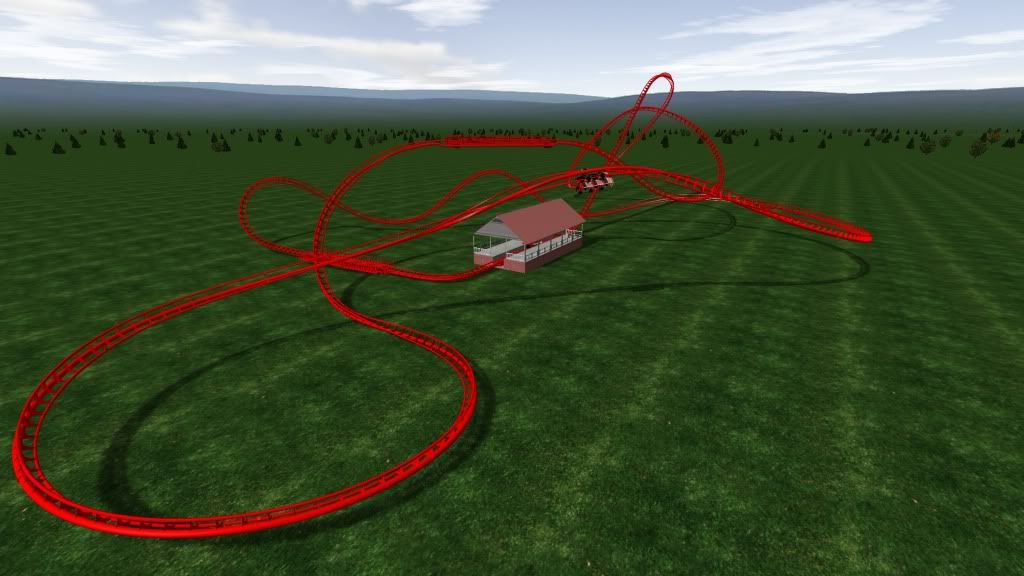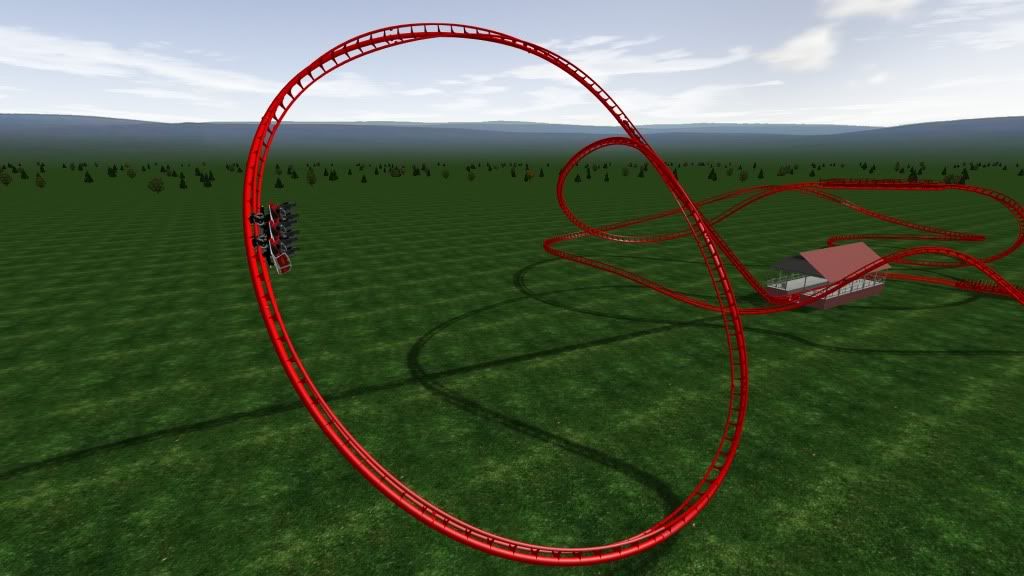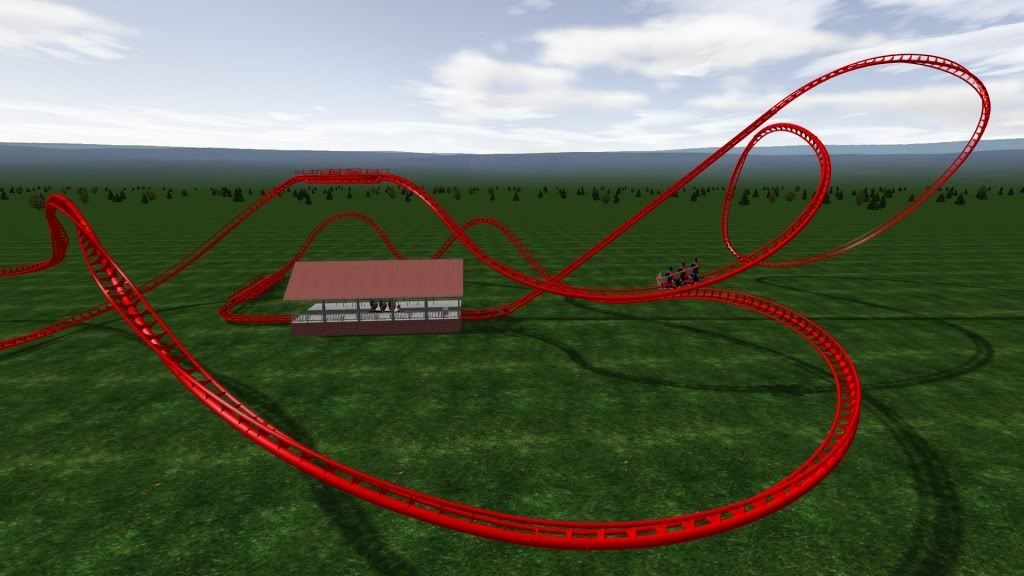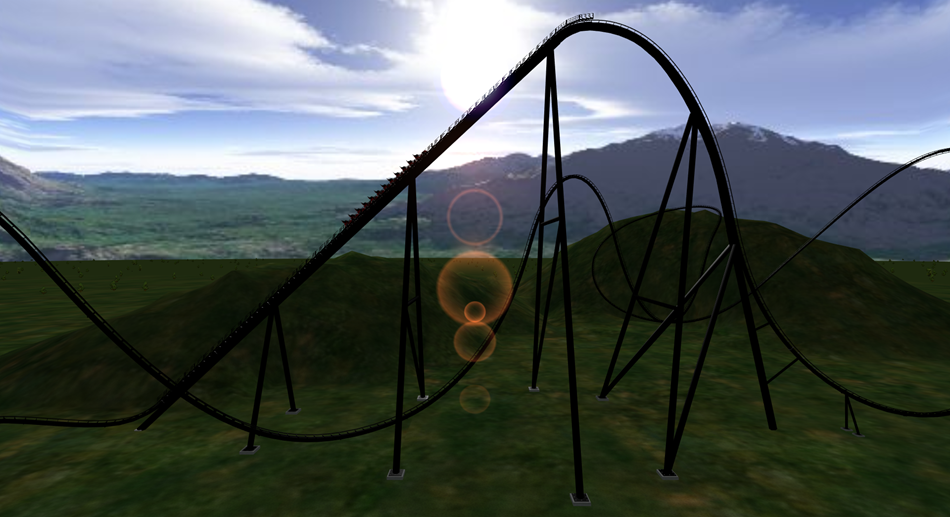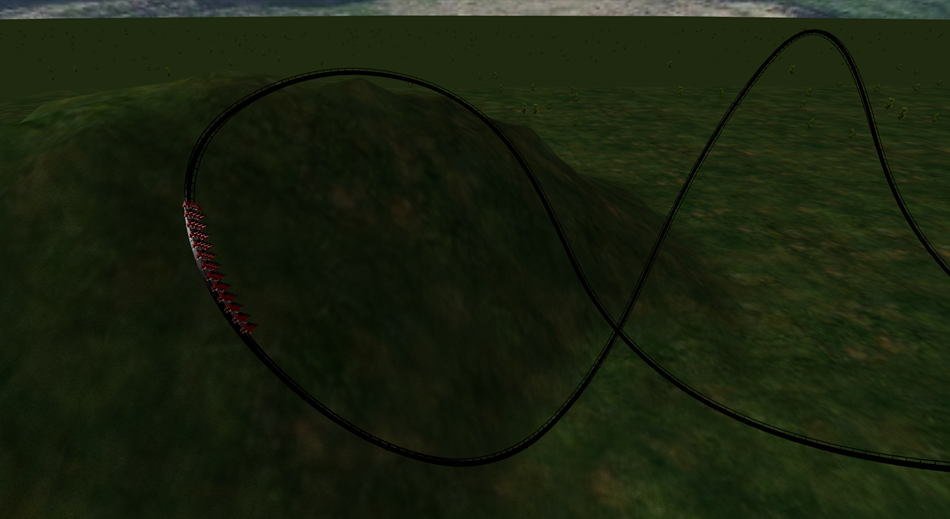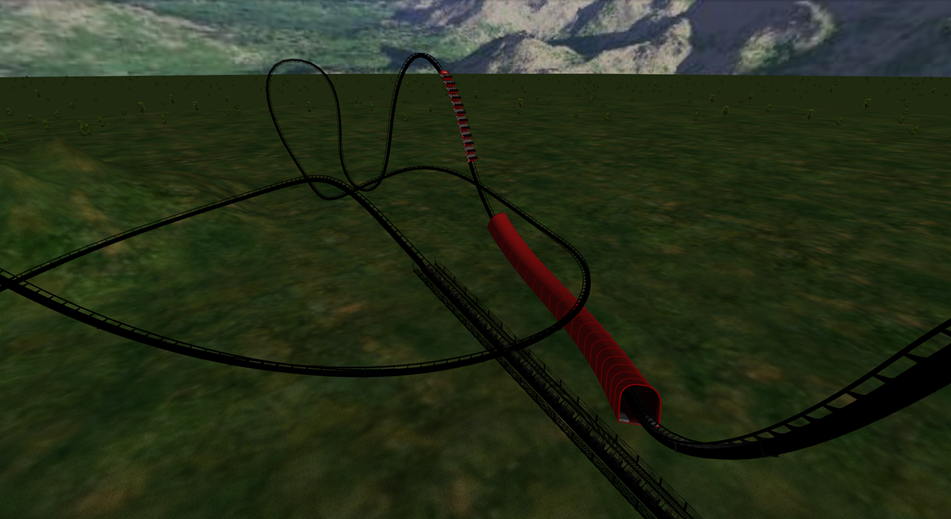Right... heartlining...
The gist of heartlining is beautifully simple to explain. The mechanics of actually doing it can be a massive headache. I've got no pictures to help me at the moment, so you'll have to put up with all the text for the time being!
The idea is that you try to get the heartline to be as straight/smooth as possible. It's quite common to see some really wacky transitions on coasters (think zero-g-rolls, banking changes) that actually end up riding perfectly. That's because the shaping is forced around the heartline - this imaginary line that runs with the track that indicates the (average) position of the riders centre of mass(es). The idea is to rotate the track 'around' the heartline, so that all the rider would feel would be rotation, no massive lateral shifting.
Seems easy enough right? The problem comes when trying to do this in NL. Firstly make sure the heartline is turned on in each view. Next you want to try and make the heartline flow as smoothly as possible. Each element and situation will be different, but generally large movements in the heartline means an unpleasant ride. Let's take the zero-g roll as an example.
Start a zero-g roll with a hill (others might have different techniques, but this works for me) that follows the rough trajectory that you want the coaster to follow. You'll want try and get the overall length, trajectory and direction sorted at this stage as it'll save moving too many nodes around later on. Next you want to get this hill into four sections. One from the entrance (I'll assume 0° banking at the entrance and exit, but you don't have to) to 90°, one from 90° to upside down, one from upside down to 90° and the final one from 90° to 0°. This should seem fairly logical...
For the banking I would suggest using the 'rel-roll' feature. This basically means that instead of specifying the banking relative to a flat piece of track (con-roll), you specify it relative to the the previous node. So for our hill with five nodes (including the start and finish) you'd have something like this:
Con-roll - 0°, 90°, 180°, 270°, 0°
Rel-roll - 0°, 90°, 90°, 90°, 0°
This will basically just make your life easier when it comes to splitting the track up even further as you won't have all sorts of messy angles and it seems to be a bit more logical to work with 'rel-roll' to me. So once you've got your track banked correctly, you'll notice that the track rotates around the track-spine, but the heartline is all over the place. If you imagine riding this element you'd be thrown around a lot, it's quite easy to see why this isn't right. (
Note: Con-roll also has some smoothing ability with banking transitions, but I've never worked out the science of that, I just leave it on all the time and if something is going pear-shaped then I'll try turning it off and seeing if that makes a difference).
So how do we fix the heartline? You'll notice that the heartline is directly above (or below) the track spine at the start, middle and end nodes, but at the two noted that are 'sideways' you'll see the heartline is off to one side. This causes the heartline to wiggle around throughout the inversion. The plan is to move the two offending nodes and adjust the direction of the middle node to smooth out the heartline path so that (from the top view) it is straight. So you'll want to mode the nodes backwards (ie, away from the heartline) to straighten it up. If you start moving the nodes you'll see which direction they should move in, it's quite self explanatory when you get going with it. You'll also notice you'll have to adjust the direction (as in, the control ties, not the location) of the middle node to get a smooth flow throughout the inversion.
Now you've heartlined the inversion from the top it's time to move onto the side and front views. For the side view you're aiming for the heartline to be as parabolic and as smooth as possible. Again, move the nodes/control ties until this looks right. Next you need to go the front view and check that the heartline looks smooth from the perspective (usually it'll look alright if it looks good in the other two views). You should now have a fairly well heartlined element.
After this I'd probably split each segment in half and play with it more to get it closer to the straight line we're aiming for, whilst smoothing the track at the same time. Once you've done that you should find you have a pretty good zero-g-roll!

Now, some notes:
-practice, practice, practice, practice x100! You can never get too much practice at building in NL. The more you build the more you'll understand how to shape elements and how to overcome problems that will (inevitably) arise.
-not all elements are the same. Often you'll have corners leading into elements, hills, restrictions that you're trying to build too. The technique I've just explained can be applied to many elements you'll just have to get used to how to adapt it. Also, you don't have to have equal rotation increments if you wanted a snappier crest (thing Maverick's horseshoe roll).
-this technique will also work for corners, lead ins/out, corkscrews... anything! Fundamentally you're trying to smooth the heartline, the zero-g just happens to be a convenient and simple example.
Hopefully this has been of some use, and you'll need to see this as more of a general guideline than a method, but as long as you start playing with, and understanding, how to use the heartline you'll end up with much better rides. I've had a look at your track, and overall it's OK, but I'll leave this post here now, I'm sure we can look at more specific areas of your ride if you want later on. You've got enough to be reading/digesting/practising now!

Any questions, don't hesitate to ask!

